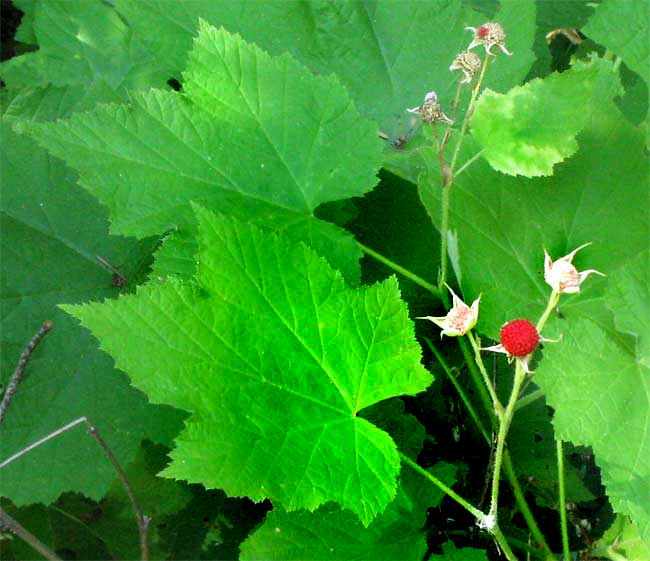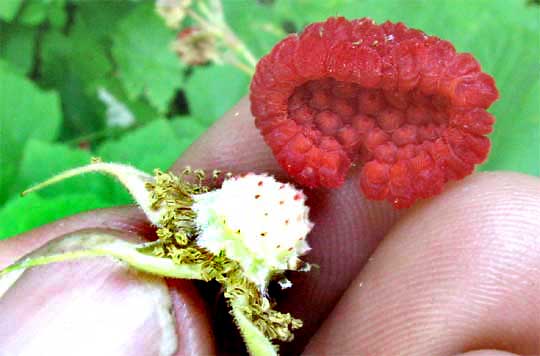Excerpts from Jim Conrad's
Naturalist Newsletter

from the the July 19, 2009 Newsletter, issued from the Siskiyou Mountains west of Grants Pass, Oregon:
THIMBLEBERRIES
I'd been waiting for a certain white-flowered, waist-high, thicket-forming shrub along a streamside trail to fruit before trying to identify it. It's a handsome plant with hand-sized, maple-like leaves. Nowadays it's producing conspicuous, red fruits, shown above.
When one of its pulpy, bumpy fruits is picked, it leaves its "core" behind as a raspberry would, as seen below:

And, by golly, it basically IS a raspberry. Along with Blackcap Raspberries, it's also a member of the genus Rubus, but it's the most anomalous Rubus I've ever seen. Rubuses such as raspberries, blackberries and dewberries are "supposed" to bear compound leaves on spiny stems but this species produces neither of those. It's the Thimbleberry, RUBUS PARVIFLORUS, distributed more or less throughout western North America from Alaska and Ontario to northwestern Mexico.
Though Thimbleberries are something new to me, they display such flexible habitat requirements that they are one of the most characteristic species of many northwestern forests. Ecologically the Thimbleberry serves as a pioneer species in the forest understory during the first several decades after disturbance, especially after fires. It needs a lot of nitrogen and declines within 2-5 years after timber harvesting as soil nutrient levels decrease.
Thimbleberry thickets provide cover for many kinds of wildlife and many animals eat its fruits. Indigenous peoples ate the fruits fresh in summer and dried during the winter. The bark was boiled and made into soap, and leaves were powdered and applied to burns to minimize scarring.